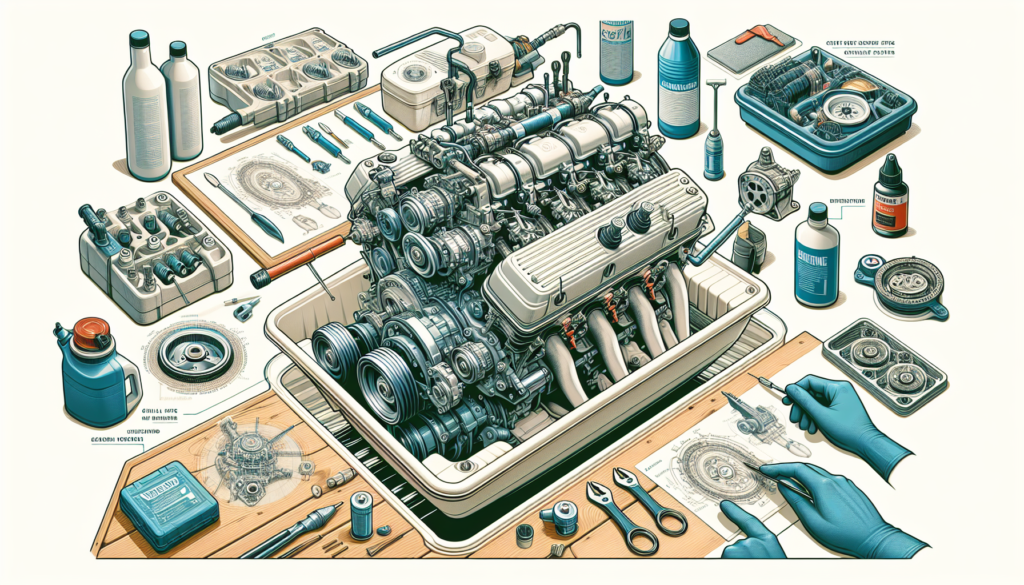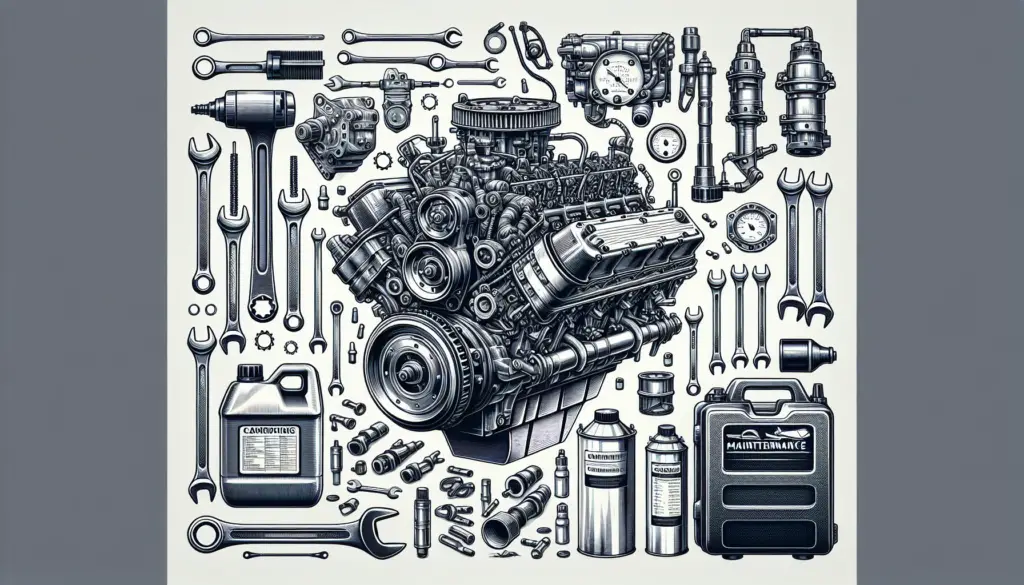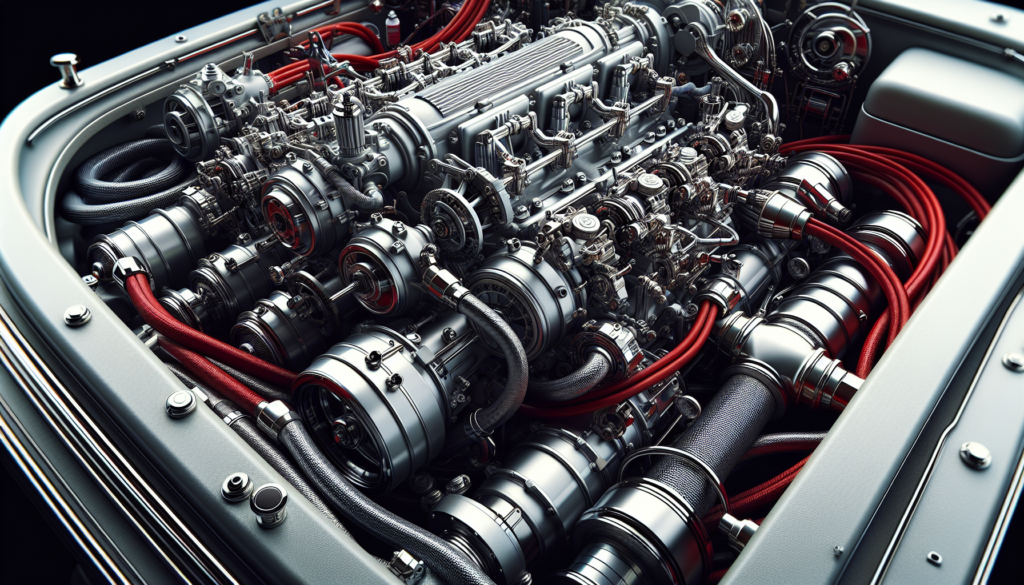Picture this: you’ve just bought your first boat, and with summer right around the corner, you can’t wait to take it out on the water. But first, you need to familiarize yourself with the engine. Not to worry, “A Beginner’s Guide to Properly Operating and Maintaining a Boat Engine” has got you covered. From igniting the motor, to regular upkeep and troubleshooting, this comprehensive guide will help you navigate the sea of information in no time. Soon, your sea legs won’t be the only things you’ll be proud of.
Understanding the Basics of Boat Engines
Whether you’re a seasoned mariner or a novice boater, understanding the basics of boat engines is crucial. Knowledge of how your boat’s engine works, its components, and various types will not only help you navigate waters smoothly but also help you troubleshoot potential problems.
Components of an Engine
Every boat engine consists of several essential components. This includes the block, which acts as the engine’s foundation and houses other parts such as the cylinders. The head seals the top of the cylinders creating the combustion chamber. The crankshaft turns up and down motion into rotational motion. Other crucial components include the pistons, connecting rod, timing belt, valves, spark plugs, and camshaft. Understanding these elements and their roles contributes to safer, more efficient boat operation.
Different Types of Boat Engines
Boat engines come in different types, each with its specifications and ideal use scenarios. The most common types are outboard, inboard, stern drive, and jet propulsion engines. Outboard engines are positioned outside the hull, convenient for maintenance and freeing up space onboard. In contrast, inboard engines are inside the boat, offering a cleaner look and better balance. Stern drives, commonly referred to as inboard/outboards, offer a blend of both worlds. Lastly, jet propulsion engines work by sucking in water and shooting it out at a high speed. Each type has its benefits—it all depends on your boating needs.
How Boat Engines Work
Boat engines operate on the basic principle of internal combustion, similar to car engines. Air and fuel mix together in the engine’s cylinder, a spark from the spark plug ignites the combination resulting in a mini explosion. This explosion forces the piston downward, moving the crankshaft, ultimately turning the propeller, propelling the boat forward.

Fundamentals of Operating a Boat Engine
Just like in any vehicle, properly starting and operating your boat engine is critical to ensuring a safe and enjoyable outing. Good knowledge of starting/stopping procedures, understanding ideal operation speeds, and handling throttling and emergency shutdowns can be immensely beneficial.
Starting and Stopping Procedures
Starting a boat engine involves several careful steps, starting from checking vital components to igniting the engine. It’s always important to check oil levels, battery connections, and fuel lines before starting. To stop the engine, you usually only have to turn the key or push a button, though it’s usually advised to let the engine idle for a while before shutting it off.
Ideal Engine Operation Speeds
Different boat engines have different ideal operation speeds, usually mentioned in your boat’s manual. Too low speeds can cause carbon buildup and run the risk of stationary overheating. Too high speeds can overload the engine leading to quicker wear and tear.
Throttling Tips and Techniques
Throttling is the process of controlling the speed of your boat by managing fuel input to the engine. Smooth throttling involves gradually increasing and decreasing speed rather than sudden shifts. It’s important to learn how your boat responds to throttle changes and tailor your throttling technique accordingly.
Emergency Shutdowns
Involving situations when the engine must be turned off immediately to prevent damage or address dangerous conditions. Situations include overheating, oil pressure losses, or even onboard fires. Your boat’s procedures for an emergency shutdown will be outlined in the operating manual – make sure you’re familiar with them.

Basic Maintenance Procedures
Like most mechanical devices, boat engines require regular maintenance to operate at peak efficiency. Regular checks, oil changes, and filter cleaning are some of the fundamental maintenance actions.
Regular Engine Checks
Regular checks should include looking for leaks, checking fluid levels and the condition of hoses, belts and cables. It’s also important to listen for any unusual noises when the engine is running, which may indicate an underlying issue.
Changing Engine Oil
Engine oil lubricates the engine, reducing friction, and preventing overheating. Regular oil changes depending on usage and engine type are critical. Typically, the oil should be changed every 50-100 hours of operation or at least once a year.
Cleaning Filters
Over time, fuel and air filters can become clogged with debris. Regularly cleaning or replacing them keeps your engine running smoother and more efficiently.

How to Troubleshoot Common Engine Problems
Like any other machine, boat engines can face problems. Knowing how to identify and troubleshoot these problems can go a long way in preventing serious damage or even dangerous situations.
Starter Motor Issues
One of the most common issues is a faulty starter motor, which could leave you unable to start the boat. If you turn the key and hear a clicking sound but the engine won’t start, it’s likely a problem with the starter motor.
Engine Overheating
If your temperature gauge indicates the engine is overheating, shut it down immediately and investigate the cause. Common culprits could be a blockage in the cooling system or an issue with the water pump.
Oil Leaks
Oil leaks can be identified by spots of engine oil around your boat. It’s crucial to fix oil leaks quickly, as they can lead to engine damage or even cause a fire onboard.
Engine Not Reaching Full Throttle
This could be due to issues with the fuel system such as blockages, or a worn-out propeller. Regular maintenance can prevent many of these issues.
Continue with remaining headings


